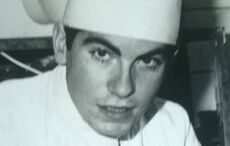Irish American astronaut Scott Kelly is back from a year in outer space.
The 52-year-old, who just celebrated his birthday in orbit on February 21, has been on board the International Space Station for 340 days. He now holds the record for the most cumulative days in space by an American astronaut – over 500.
Last night, Kelly and Russian cosmonauts Mikhail Kornienko and Sergei Volkovhurtled came back into the Earth’s atmosphere in the Soyuz TMA-18M capsule, finally reaching terra firma in Kazakhstan.
Kornienko was also in space for 340 days. The two men are part of a study analyzing the impacts of long-term space travel in microgravity on the human body, in preparation for an eventual mission to Mars. Their venture marks the fourth-longest space trip in human history.
Kelly is an especially important part of the study because when he zoomed into orbit last year, he left an exact genetic copy of himself on Earth: his twin and fellow astronaut Mark Kelly.
Mark, who is six minutes older than his brother and is married to former Congressman Gabrielle Giffords, has been to space four times, as a shuttle pilot and commander. He ended his last mission in 2011.
The Irish American twins, who are both former United States Navy captains and were raised in West Orange, NJ trace their Irish heritage through their father, Richard Kelly, a retired police captain. In a 2006 interview with IrishCentral’s sister publication, Irish America magazine, it was revealed that the brothers were determined to go into space at an early age.
Their father said that when the boys were eight they told their Irish grandmother in Orange, NJ that they would be going up in space someday.
Their mother, also a retired police officer, said she was not surprised.
"I really do believe there is a genetic predisposition for certain things," she told the magazine.
Throughout the next year, NASA will be studying the Kelly twins to determine what impact Scott’s year in space had on his health. This data will help NASA strategize for an eventual mission to Mars, during which astronauts would be in space for two to three years.
As the above video from "The Verge" explains, “Living for months in microgravity can alter many of the body's systems, since humans evolved on Earth. Astronauts who have stayed in space for long periods have problems with their circulation and eyesight. That’s in addition to losses in bone and muscle tissue. Kelly has collected fluid samples and undergone rigorous medical testing to document these changes over the course of his trip.”
In addition to participating in this ground-breaking study and helping to run the International Space Station, during his mission Kelly took hundreds of photos, documenting his days in space and his view of the Earth.
"I have taken a lot of pictures because I've been up here for a long time. . . I've definitely taken some good ones and some memorable ones,” he acknowledged in his last press conference on board the ISS.
His social media accounts have amassed close to one million followers during his latest expedition.
However beautiful they are, Kelly was quick to emphasize, the photos were not the most important part of the mission for him. "The thing I like most about flying in space is not the view," he added. "The thing I like about it is doing something I feel very, very strongly about."
Welcome home, Commander Kelly!




Comments